Principle of Shape
Principles of Shape
REDKEN BUSINESS CONNECTION PROGRAMS
Understanding the principles of shape helps you create the specific looks your clients request. They’re easy to duplicate once you can break shapes down to their simplest elements.
POINT
A point occupies space and represents a change in direction.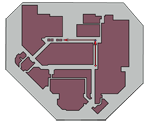

A line is a continuation of a series of connecting points that move in a specific direction. There are two types of lines: straight and curved. Straight lines create a hard edge; curved lines create a softer edge.
ANGLE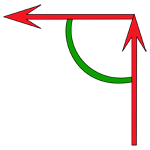
The joining or intersection of two lines forms an angle. An angle is a change in direction of two lines that intersect. A degree is the measurement of angles as they move apart from each other.
SHAPE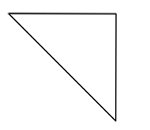
To create a shape, you must enclose an angle. An angle cannot be a shape until it’s fully enclosed.
HEAD FORM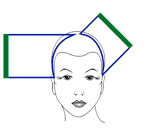
The head form is the first line of the angle. You create the second line of the angle when you pick up a piece of hair. The imaginary line created by the cutting edge encloses the angle, making a shape. Until you physically cut the hair, you have not created a new shape.
HORIZONTAL LINES
A horizontal line builds weight into a shape and creates a sense of width. In hair design, horizontal shapes are symmetrical—if you measured distances horizontally within the shape, they would be the same. Horizontal lines form a 90 degree angle to vertical lines.
VERTICAL LINES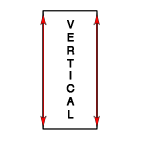
Vertical lines lead the path of the eye up and down, and reduce weight in the shape. This creates an illusion of length. Vertical lines give a sense of length to a shape and create a flatter silhouette. Vertical lines form a 90 degree angle to horizontal lines.
DIAGONAL LINES 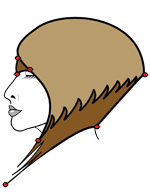
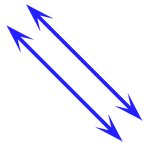
Diagonal lines bevel or round out the shape. A beveled edge on a mirror means that the corner is cut to round off the appearance. Cutting a diagonal line into a shape yields a rounded result. Diagonal lines form a 45 degree angle to both horizontal and vertical lines. You can apply your knowledge of line and shape to a haircut to achieve different looks. If you take a classic hairstyle like the Wedge and cut it using horizontal sections, you create weight in the hairstyle. If you created the Wedge using vertical sections instead of horizontal sections, you create a look that’s flatter and closer to the head. Diagonal sections would create a more rounded or beveled result.
Principle of Shape
Principles of Shape
REDKEN BUSINESS CONNECTION PROGRAMS
Understanding the principles of shape helps you create the specific looks your clients request. They’re easy to duplicate once you can break shapes down to their simplest elements.
POINT
A point occupies space and represents a change in direction.

A line is a continuation of a series of connecting points that move in a specific direction. There are two types of lines: straight and curved. Straight lines create a hard edge; curved lines create a softer edge.
ANGLE
The joining or intersection of two lines forms an angle. An angle is a change in direction of two lines that intersect. A degree is the measurement of angles as they move apart from each other.
SHAPE
To create a shape, you must enclose an angle. An angle cannot be a shape until it’s fully enclosed.
HEAD FORM
The head form is the first line of the angle. You create the second line of the angle when you pick up a piece of hair. The imaginary line created by the cutting edge encloses the angle, making a shape. Until you physically cut the hair, you have not created a new shape.
HORIZONTAL LINES
A horizontal line builds weight into a shape and creates a sense of width. In hair design, horizontal shapes are symmetrical—if you measured distances horizontally within the shape, they would be the same. Horizontal lines form a 90 degree angle to vertical lines.
VERTICAL LINES
Vertical lines lead the path of the eye up and down, and reduce weight in the shape. This creates an illusion of length. Vertical lines give a sense of length to a shape and create a flatter silhouette. Vertical lines form a 90 degree angle to horizontal lines.
DIAGONAL LINES 

Diagonal lines bevel or round out the shape. A beveled edge on a mirror means that the corner is cut to round off the appearance. Cutting a diagonal line into a shape yields a rounded result. Diagonal lines form a 45 degree angle to both horizontal and vertical lines. You can apply your knowledge of line and shape to a haircut to achieve different looks. If you take a classic hairstyle like the Wedge and cut it using horizontal sections, you create weight in the hairstyle. If you created the Wedge using vertical sections instead of horizontal sections, you create a look that’s flatter and closer to the head. Diagonal sections would create a more rounded or beveled result.
